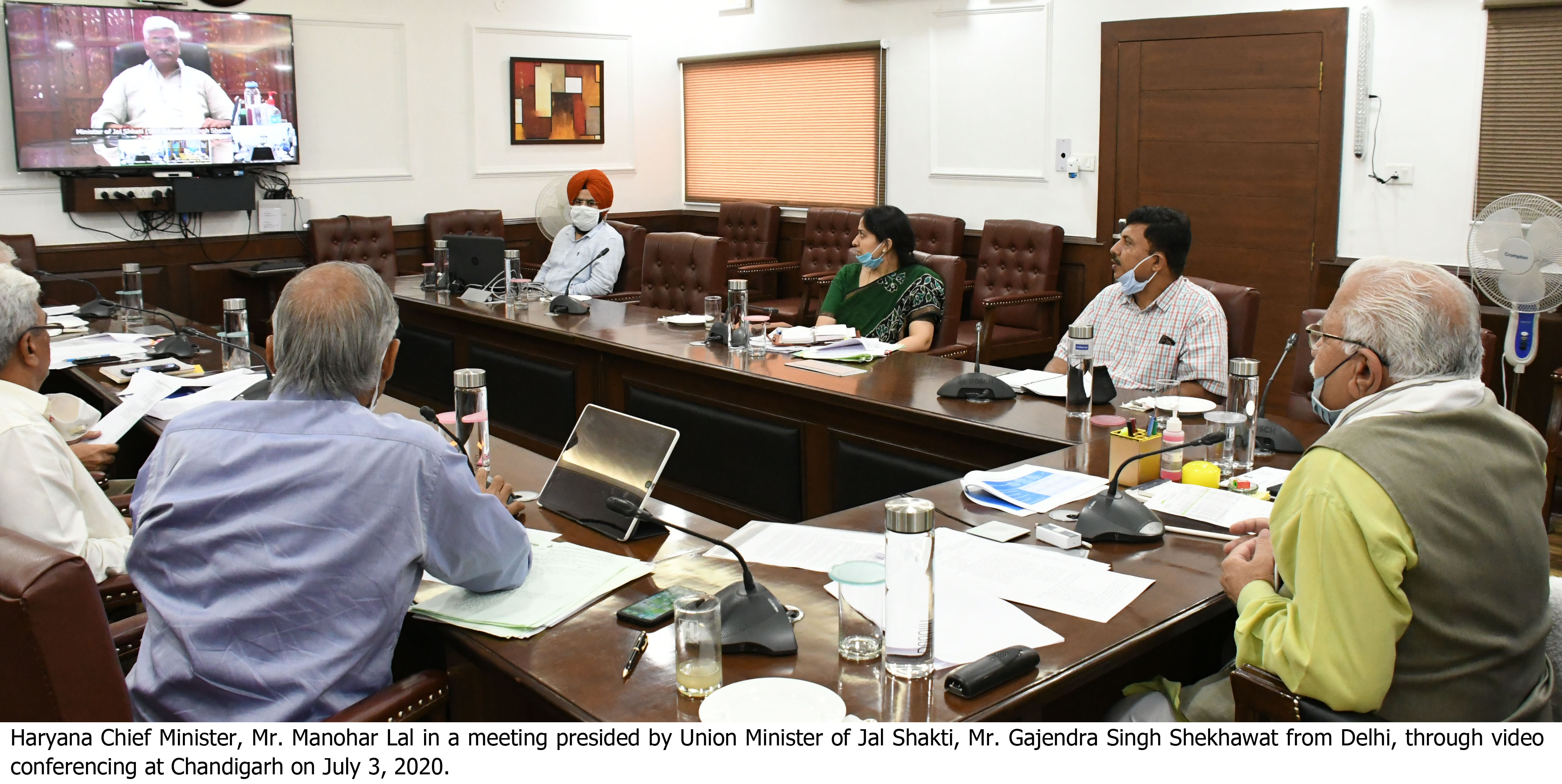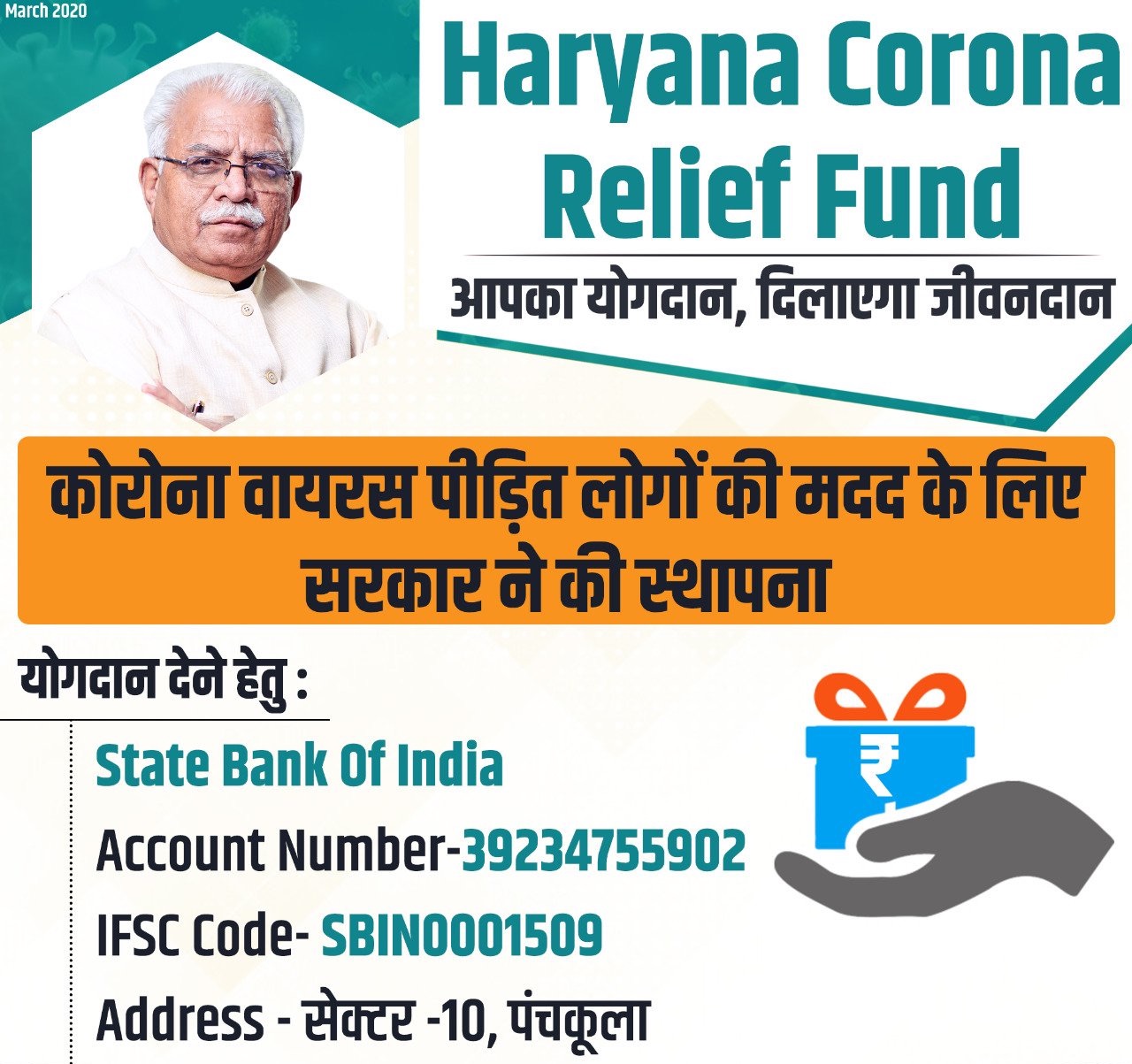
Chandigarh July 3: Union Minister of Jal Shakti, Mr. Gajendra Singh Shekhawat, today lauded the efforts of Haryana Government for swiftly moving forward to achieve the target of providing piped drinking water to all rural households in the country by 2022, which is much ahead of the National target date of 2024, under the ambitious 'Jal Jeevan Mission' (JJM). He said that other states have been asked to emulate Haryana pattern in planning their way forward in ‘Jal Jeevan Mission’.
“It is a matter of great pride that dedicated efforts made by various departments and officers, who under the leadership of Chief Minister, Mr. Manohar Lal, are continually working as a team to beat the National Goal of providing tap water connection to all rural houses by 2022,” the Minister said.
The Union Minister Mr. Gajendra Singh Shekhawat said this while reviewing the work being carried out by Haryana Government under the ‘Jal Jeevan Mission’ (JJM), through video conferencing held here today. Chief Minister, Mr. Manohar Lal, Additional Chief Secretary, Public Health Engineering Department, Mr. Devender Singh, Deputy Principal Secretary to Chief Minister, Mrs. Ashima Brar, and other officials were also present.
In the meeting, Chief Minister said, “Reiterating its commitment to provide water connection to all rural households, Haryana Government is speedily moving forward to provide Functional Household Tap Connections (FHTCs) to all rural households by 2022. Various measures are being taken in a bid to provide piped drinking water to all rural households.”
Under this Mission, for providing Functional Household Tap Connection (FHTC), road cut charges of Rs. 2000 have been waived off by the Government and citizens would be provided with two options either to pay Rs. 500 upfront as new connection charges and or to pay Rs. 50 (i.e. Rs. 40 flat rate + Rs. 10 extra) for general connection and Rs. 30 (i.e. Rs. 20 flat rate +Rs. 10 extra) for SC connection, as per prevailing Government tariff pay, in this way the payment of Rs 500 as a connection fee will be collected through easy monthly installments, he informed.
He informed that according to the guidelines issued by the Central Government, under this mission, a multitude of steps have been initiated as well as Village Water and Sewerage Committees are being constituted with a 50 percent stake of women members.
Divulging the details about the State Government’s own water conservation scheme, the Chief Minister shared that with the aim to save water, ‘Mera Pani Meri Virasat Yojana’ has been launched under crop diversification. Under this scheme, farmer willing to adopt crop diversification would get an incentive of Rs 7,000 per acre from the government, he added.
The farmers of the State have also been appealed to adopt crop diversification and it is a matter of great satisfaction that farmers have given their consent for growing alternative crops, other than paddy over around one lakh hectare of land. Around 12 to 13 percent of water will be saved in this way, he said.
He further shared that to ensure better utilization and conservation of water, Haryana Pond and Waste Water Management Authority has been set up. He said that Authority is working towards the rejuvenation of ponds in the State.
Earlier, Additional Chief Secretary, Public Health Engineering Department, Mr. Devender Singh, shared that there are 30 Lakh households in the State, of which 23.53 lakh households have issued Functional Household Tap Connection (FHTC).
He said that despite the on-going COVID crisis, the work pace of providing 55 liters pure drinking water per person per day in households of rural areas did not slow down was not stopped. The national set target of providing 4.59 lakh FHTC under this mission for current financial year 2020-21 will be completed by August 15, 2020, by the State Government, he informed.
Mr. Devender Singh informed that the works in habitations have been divided into three categories. As per the plan Category-I includes such villages where there is no problem of the water source, Category-ll encompasses those villages which experience water problem in summers and Category- III covers such villages which have problems of perennial water source.



